The Preparation of a Low-Cost, Structurally Simple Triboelectric Nanogenerator Based on Fullerene Carbon Soot-Doped Polydimethylsiloxane Composite Film
Abstract
:1. Introduction
2. Materials and Methods
2.1. Materials
2.2. Fabrication of FS-TENG
3. Results
3.1. Output Characteristics of FS-TENG
3.2. The Long-Term Stability and Durability of FS-TENG
3.3. Working Principle of FS-TENG
3.4. Simulation with COMSOL
3.5. FS-TENG Powers Microelectronic Devices
4. Discussion
5. Conclusions
- (1)
- The optimal FS-TENG performance is achieved when FS is added at 0.15%.
- (2)
- The developed FS-TENG exhibits a maximum Voc of 18.49 V and Isc of 2.2 µA, achieving a peak power density of 145 µW/m2 with a 63 MΩ load resistor.
- (3)
- The electrical energy generated by the FS-TENG is sufficient to illuminate 72 LEDs and can also power devices such as a digital watch, kitchen timer, or sports stopwatch.
- (4)
- Furthermore, the FS-TENG is capable of producing varying electrical signals in response to different mechanical energies harnessed, making it suitable as a sensor for monitoring mechanical movements.
- (5)
- This research contributes to the advancement of deploying TENGs with both low-cost and straightforward designs in sustainable energy and autonomous energy sensing applications.
Author Contributions
Funding
Institutional Review Board Statement
Informed Consent Statement
Data Availability Statement
Conflicts of Interest
References
- Moreira, K.S.; Santos da Campo, Y.A.; Lorenzett, E.; Burgo, T.A.L. Low-cost triboelectric nanogenerator based on aseptic carton package. Results Eng. 2023, 17, 100965. [Google Scholar] [CrossRef]
- Korkmaz, S.; Kariper, İ.A. Production and applications of flexible/wearable triboelectric nanogenerator (TENGS). Synth. Met. 2021, 273, 116692. [Google Scholar] [CrossRef]
- Salauddin, M.; Rana, S.M.S.; Sharifuzzaman, M.; Song, H.S.; Reza, M.S.; Jeong, S.H.; Park, J.Y. Highly Electronegative V2CTx/Silicone Nanocomposite-Based Serpentine Triboelectric Nanogenerator for Wearable Self-Powered Sensors and Sign Language Interpretation. Adv. Energy Mater. 2023, 13, 2203812. [Google Scholar] [CrossRef]
- Xu, Q.; Shang, C.; Ma, H.; Hong, Q.; Li, C.; Ding, S.; Xue, L.; Sun, X.; Pan, Y.; Sugahara, T.; et al. A guided-liquid-based hybrid triboelectric nanogenerator for omnidirectional and high-performance ocean wave energy harvesting. Nano Energy 2023, 109, 108240. [Google Scholar] [CrossRef]
- Paosangthong, W.; Wagih, M.; Torah, R.; Beeby, S. Textile-based triboelectric nanogenerator with alternating positive and negative freestanding woven structure for harvesting sliding energy in all directions. Nano Energy 2022, 92, 106739. [Google Scholar] [CrossRef]
- Lee, D.-M.; Rubab, N.; Hyun, I.; Kang, W.; Kim, Y.-J.; Kang, M.; Choi, B.O.; Kim, S.-W. Ultrasound-mediated triboelectric nanogenerator for powering on-demand transient electronics. Sci. Adv. 2022, 8, eabl8423. [Google Scholar] [CrossRef] [PubMed]
- Sahu, M.; Šafranko, S.; Hajra, S.; Padhan, A.M.; Živković, P.; Jokić, S.; Kim, H.J. Development of triboelectric nanogenerator and mechanical energy harvesting using argon ion-implanted kapton, zinc oxide and kapton. Mater. Lett. 2021, 301, 130290. [Google Scholar] [CrossRef]
- Rodrigues, C.; Nunes, D.; Clemente, D.; Mathias, N.; Correia, J.M.; Rosa-Santos, P.; Taveira-Pinto, F.; Morais, T.; Pereira, A.; Ventura, J. Emerging triboelectric nanogenerators for ocean wave energy harvesting: State of the art and future perspectives. Energy Environ. Sci. 2020, 13, 2657–2683. [Google Scholar] [CrossRef]
- Fan, F.-R.; Tian, Z.-Q.; Lin Wang, Z. Flexible triboelectric generator. Nano Energy 2012, 1, 328–334. [Google Scholar] [CrossRef]
- Salauddin, M.; Rana, S.M.S.; Rahman, M.T.; Sharifuzzaman, M.; Maharjan, P.; Bhatta, T.; Cho, H.; Lee, S.H.; Park, C.; Shrestha, K.; et al. Fabric-Assisted MXene/Silicone Nanocomposite-Based Triboelectric Nanogenerators for Self-Powered Sensors and Wearable Electronics. Adv. Funct. Mater. 2022, 32, 2107143. [Google Scholar] [CrossRef]
- Jin, L.; Xiao, X.; Deng, W.; Nashalian, A.; He, D.; Raveendran, V.; Yan, C.; Su, H.; Chu, X.; Yang, T.; et al. Manipulating Relative Permittivity for High-Performance Wearable Triboelectric Nanogenerators. Nano Lett. 2020, 20, 6404–6411. [Google Scholar] [CrossRef] [PubMed]
- Shrestha, K.; Sharma, S.; Pradhan, G.B.; Bhatta, T.; Maharjan, P.; Rana, S.M.S.; Lee, S.; Seonu, S.; Shin, Y.; Park, J.Y. A Siloxene/Ecoflex Nanocomposite-Based Triboelectric Nanogenerator with Enhanced Charge Retention by MoS2/LIG for Self-Powered Touchless Sensor Applications. Adv. Funct. Mater. 2022, 32, 2113005. [Google Scholar] [CrossRef]
- Saadatnia, Z.; Mosanenzadeh, S.G.; Esmailzadeh, E.; Naguib, H.E. A High Performance Triboelectric Nanogenerator Using Porous Polyimide Aerogel Film. Sci. Rep. 2019, 9, 1370. [Google Scholar] [CrossRef] [PubMed]
- Yar, A. Enhanced output performance of tetraethyl orthosilicate and graphene nanoplates-decorated nanofiber-based triboelectric nanogenerators. Colloids Surf. A Physicochem. Eng. Asp. 2021, 631, 127670. [Google Scholar] [CrossRef]
- Kim, M.; Ra, Y.; Cho, S.; Jang, S.; Kam, D.; Yun, Y.; Kim, H.; Choi, D. Geometric gradient assisted control of the triboelectric effect in a smart brake system for self-powered mechanical abrasion monitoring. Nano Energy 2021, 89, 106448. [Google Scholar] [CrossRef]
- Peng, X.; Dong, K.; Ning, C.; Cheng, R.; Yi, J.; Zhang, Y.; Sheng, F.; Wu, Z.; Wang, Z.L. All-Nanofiber Self-Powered Skin-Interfaced Real-Time Respiratory Monitoring System for Obstructive Sleep Apnea-Hypopnea Syndrome Diagnosing. Adv. Funct. Mater. 2021, 31, 2103559. [Google Scholar] [CrossRef]
- Luo, J.; Han, K.; Wu, X.; Cai, H.; Jiang, T.; Zhou, H.; Wang, Z.L. Self-powered mobile sterilization and infection control system. Nano Energy 2021, 88, 106313. [Google Scholar] [CrossRef]
- Pang, H.; Feng, Y.; An, J.; Chen, P.; Han, J.; Jiang, T.; Wang, Z.L. Segmented Swing-Structured Fur-Based Triboelectric Nanogenerator for Harvesting Blue Energy toward Marine Environmental Applications. Adv. Funct. Mater. 2021, 31, 2106398. [Google Scholar] [CrossRef]
- Zaghloul, U.; Papaioannou, G.; Bhushan, B.; Coccetti, F.; Pons, P.; Plana, R. On the reliability of electrostatic NEMS/MEMS devices: Review of present knowledge on the dielectric charging and stiction failure mechanisms and novel characterization methodologies. Microelectron. Reliab. 2011, 51, 1810–1818. [Google Scholar] [CrossRef]
- Lacks, D.J.; Mohan Sankaran, R. Contact electrification of insulating materials. J. Phys. D Appl. Phys. 2011, 44, 453001. [Google Scholar] [CrossRef]
- Lin, S.; Xu, L.; Xu, C.; Chen, X.; Wang, A.C.; Zhang, B.; Lin, P.; Yang, Y.; Zhao, H.; Wang, Z.L. Electron Transfer in Nanoscale Contact Electrification: Effect of Temperature in the Metal–Dielectric Case. Adv. Mater. 2019, 31, 1808197. [Google Scholar] [CrossRef] [PubMed]
- Wang, Z.L. On the first principle theory of nanogenerators from Maxwell’s equations. Nano Energy 2020, 68, 104272. [Google Scholar] [CrossRef]
- Yoon, H.-J.; Ryu, H.; Kim, S.-W. Sustainable powering triboelectric nanogenerators: Approaches and the path towards efficient use. Nano Energy 2018, 51, 270–285. [Google Scholar] [CrossRef]
- Davies, D. Charge generation on dielectric surfaces. J. Phys. D Appl. Phys. 1969, 2, 1533. [Google Scholar] [CrossRef]
- Li, D.; Xu, C.; Liao, Y.; Cai, W.; Zhu, Y.; Wang, Z.L. Interface inter-atomic electron-transition induced photon emission in contact-electrification. Sci. Adv. 2021, 7, eabj0349. [Google Scholar] [CrossRef] [PubMed]
- Fu, J.; Xia, K.; Xu, Z. A triboelectric nanogenerator based on human fingernail to harvest and sense body energy. Microelectron. Eng. 2020, 232, 111408. [Google Scholar] [CrossRef]
- Xia, X.; Chen, J.; Liu, G.; Javed, M.S.; Wang, X.; Hu, C. Aligning graphene sheets in PDMS for improving output performance of triboelectric nanogenerator. Carbon 2017, 111, 569–576. [Google Scholar] [CrossRef]
- Harnchana, V.; Ngoc, H.V.; He, W.; Rasheed, A.; Park, H.; Amornkitbamrung, V.; Kang, D.J. Enhanced Power Output of a Triboelectric Nanogenerator using Poly(dimethylsiloxane) Modified with Graphene Oxide and Sodium Dodecyl Sulfate. ACS Appl. Mater. Interfaces 2018, 10, 25263–25272. [Google Scholar] [CrossRef]
- Wu, C.; Kim, T.W.; Choi, H.Y. Reduced graphene-oxide acting as electron-trapping sites in the friction layer for giant triboelectric enhancement. Nano Energy 2017, 32, 542–550. [Google Scholar] [CrossRef]

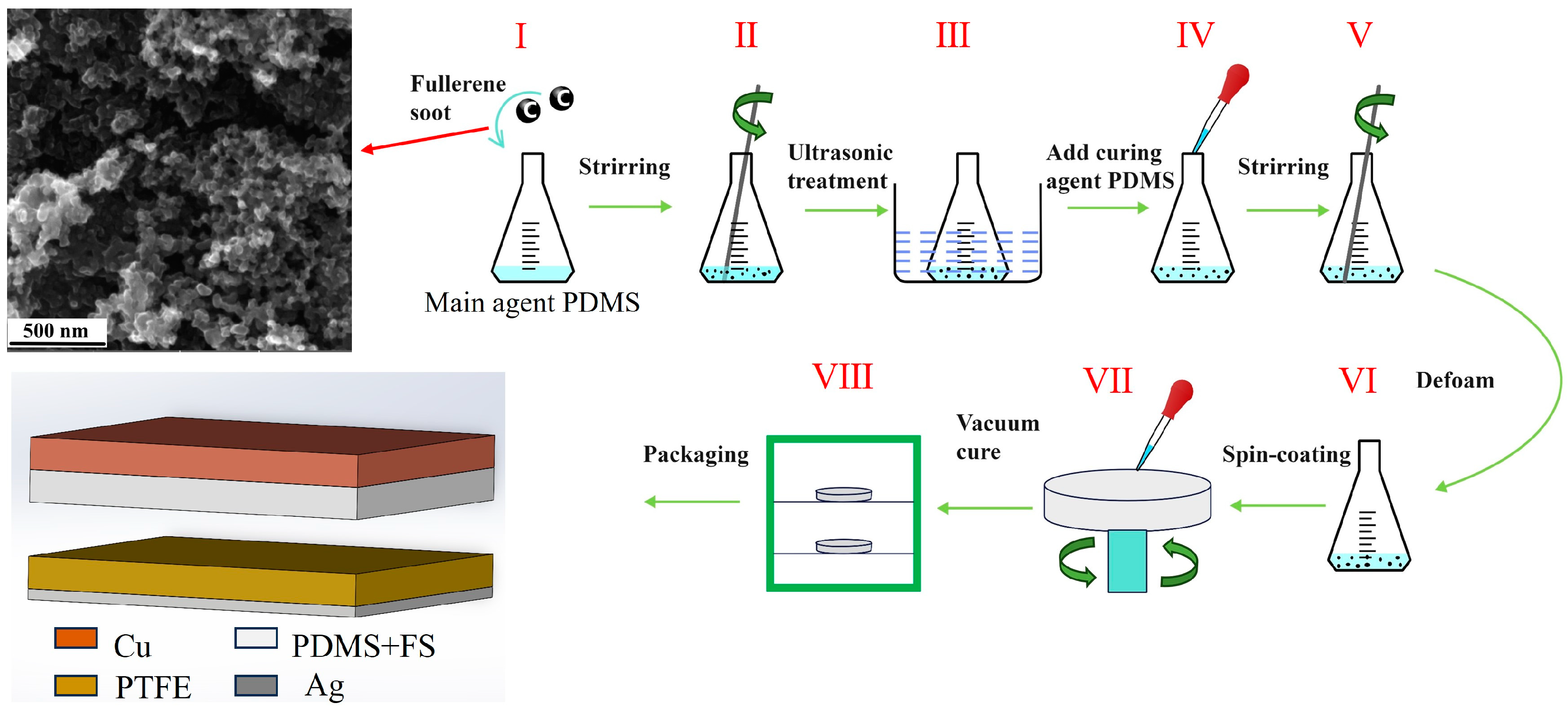
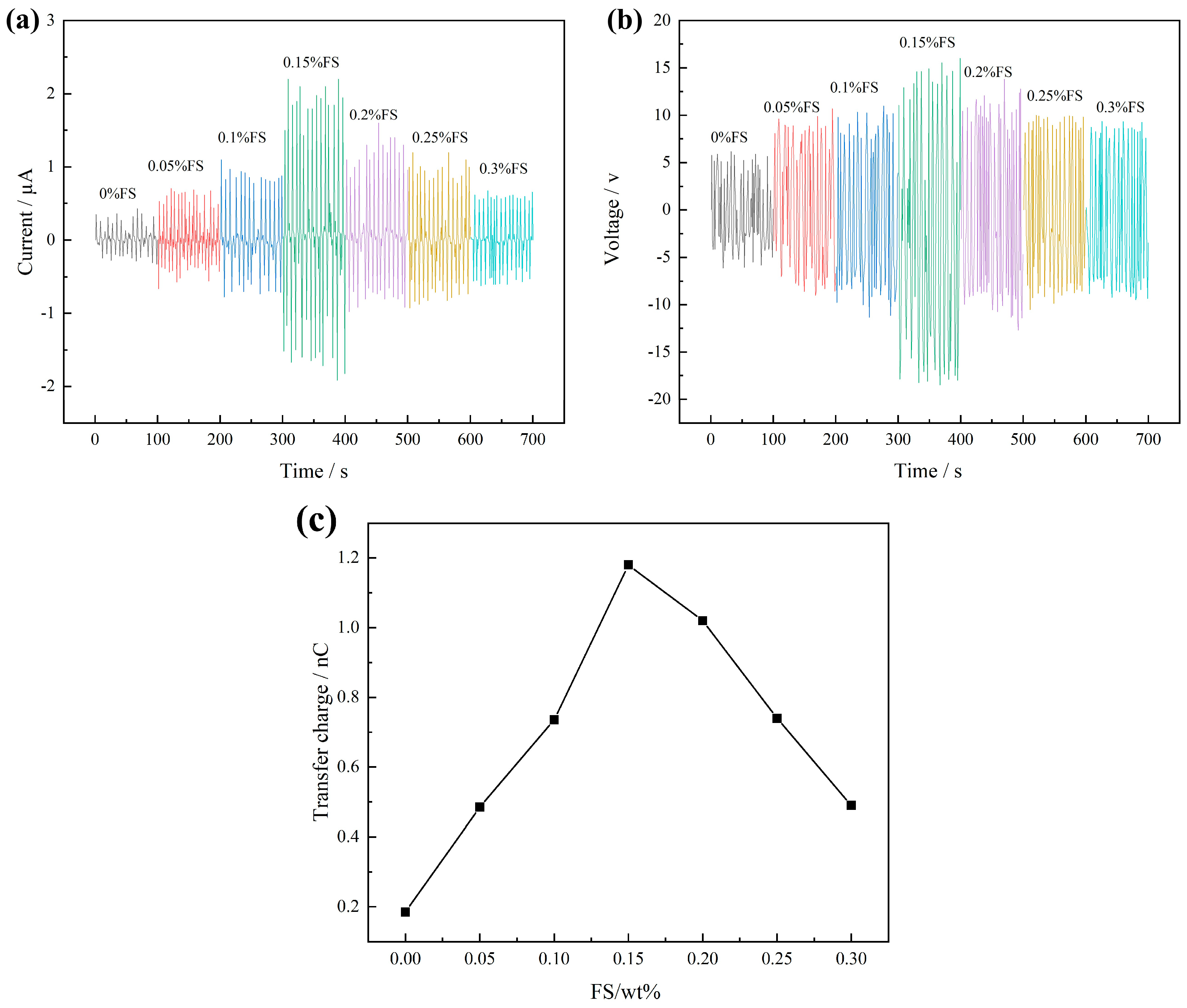
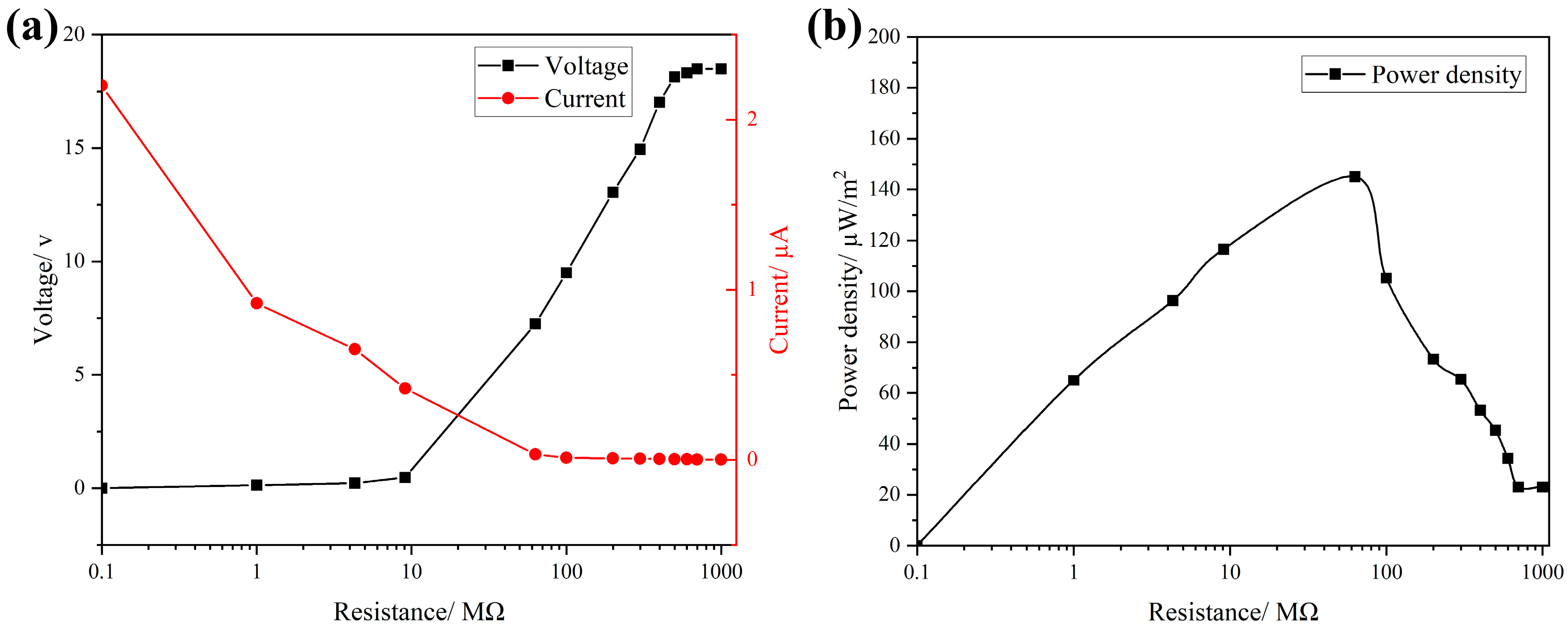

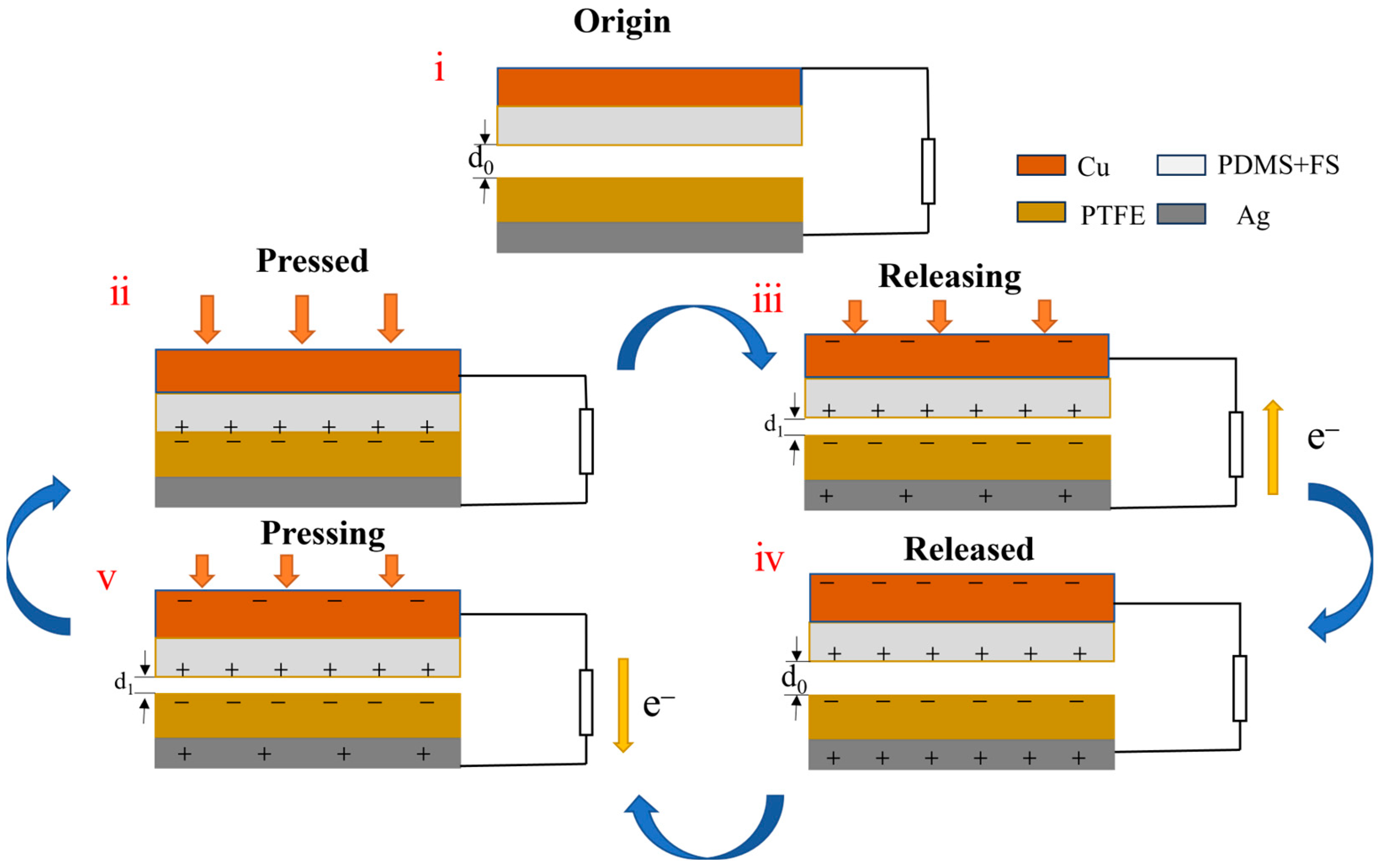
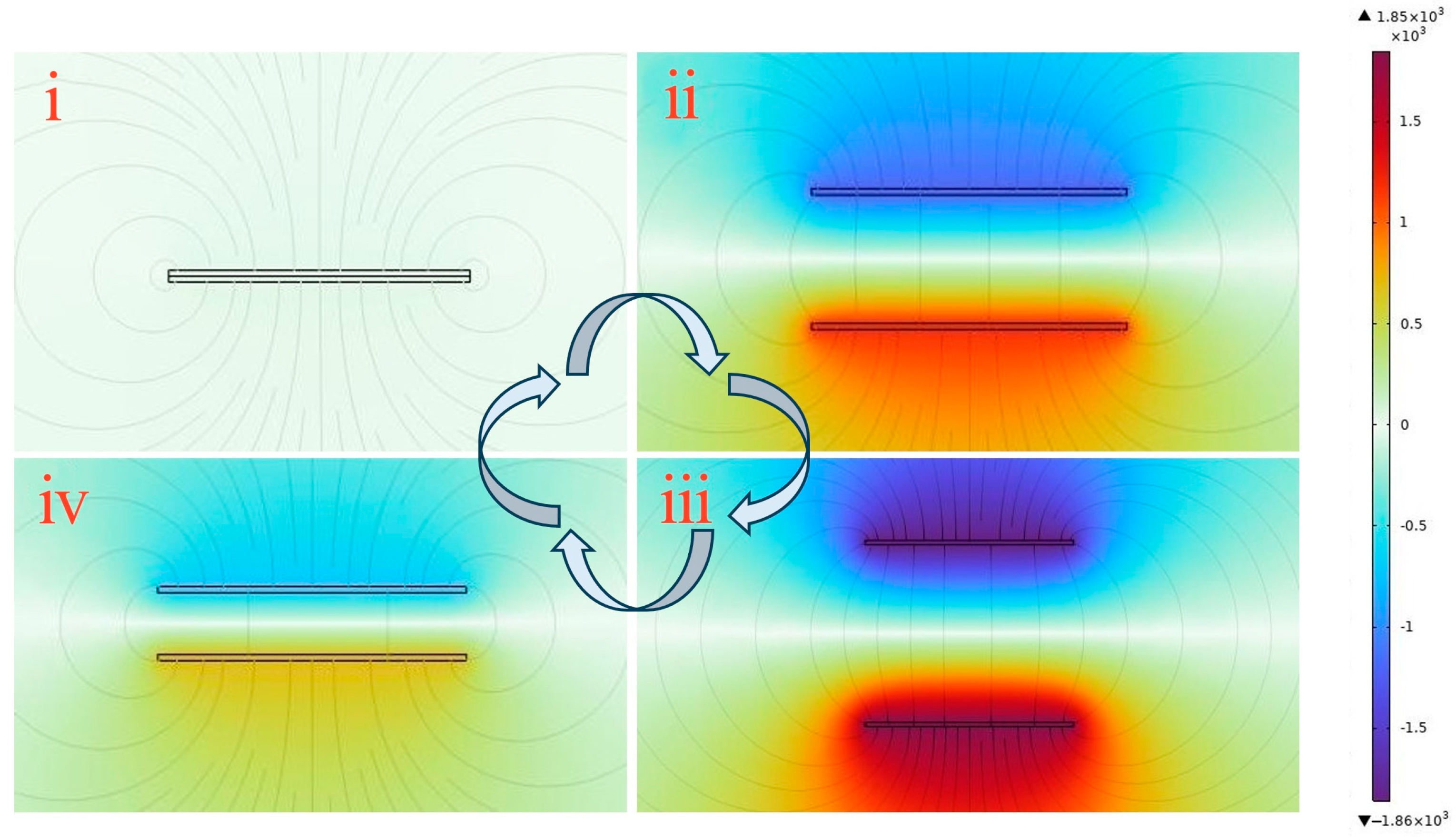
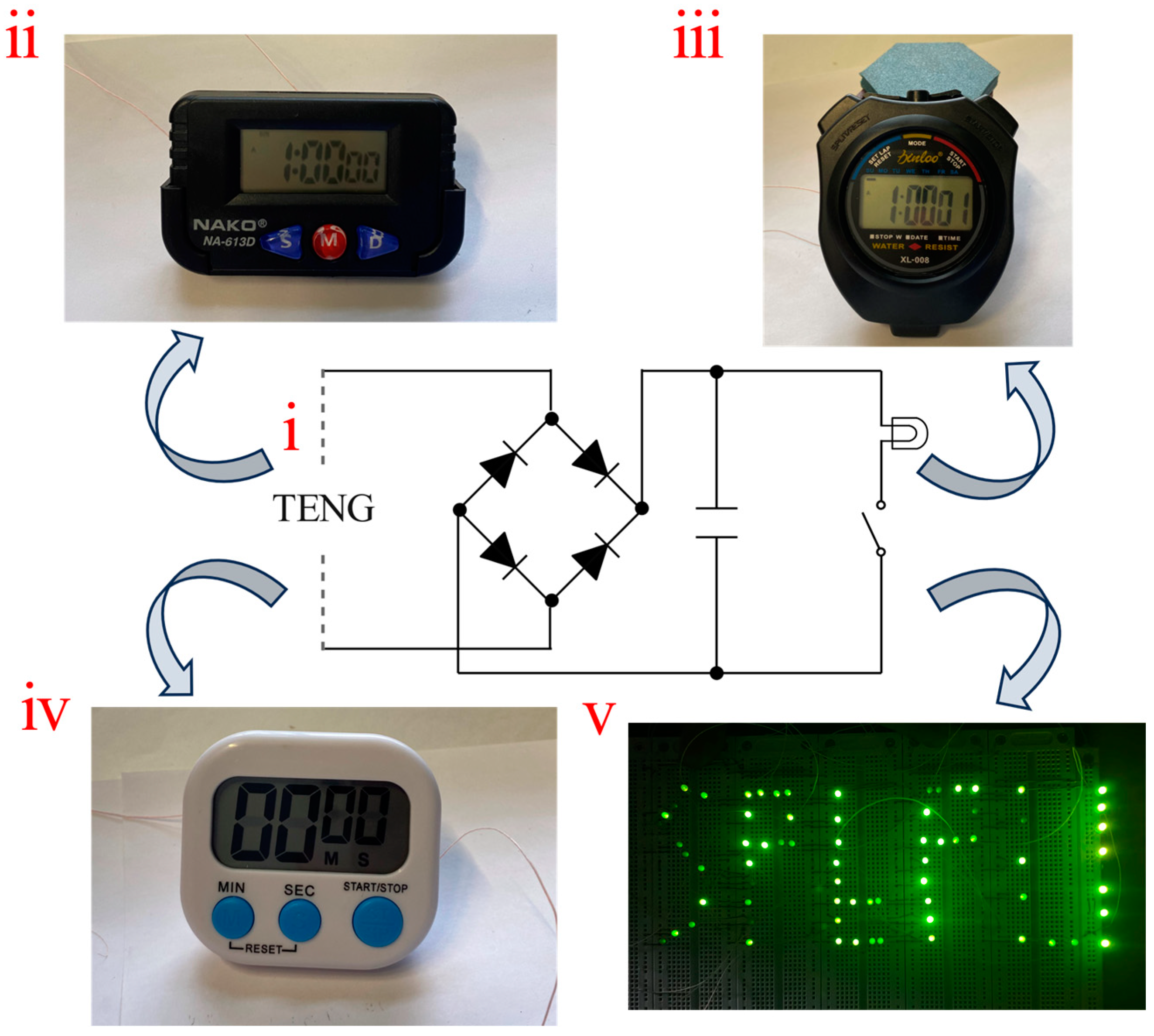
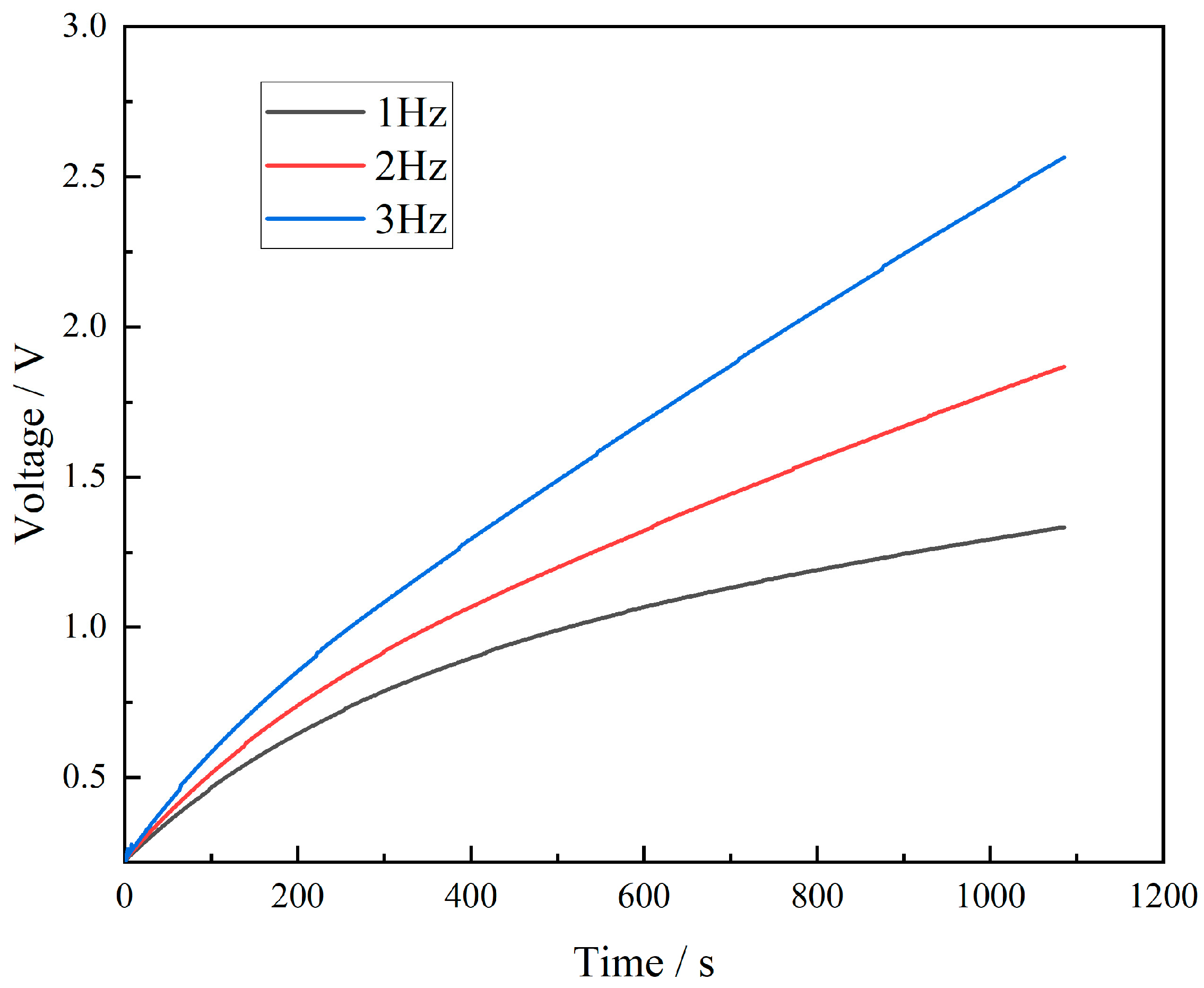


Disclaimer/Publisher’s Note: The statements, opinions and data contained in all publications are solely those of the individual author(s) and contributor(s) and not of MDPI and/or the editor(s). MDPI and/or the editor(s) disclaim responsibility for any injury to people or property resulting from any ideas, methods, instructions or products referred to in the content. |
© 2024 by the authors. Licensee MDPI, Basel, Switzerland. This article is an open access article distributed under the terms and conditions of the Creative Commons Attribution (CC BY) license (https://creativecommons.org/licenses/by/4.0/).
Share and Cite
Yang, S.; Zhao, W.; Tolochko, O.; Larionova, T. The Preparation of a Low-Cost, Structurally Simple Triboelectric Nanogenerator Based on Fullerene Carbon Soot-Doped Polydimethylsiloxane Composite Film. Materials 2024, 17, 2470. https://doi.org/10.3390/ma17112470
Yang S, Zhao W, Tolochko O, Larionova T. The Preparation of a Low-Cost, Structurally Simple Triboelectric Nanogenerator Based on Fullerene Carbon Soot-Doped Polydimethylsiloxane Composite Film. Materials. 2024; 17(11):2470. https://doi.org/10.3390/ma17112470
Chicago/Turabian StyleYang, Shujie, Wen Zhao, Oleg Tolochko, and Tatiana Larionova. 2024. "The Preparation of a Low-Cost, Structurally Simple Triboelectric Nanogenerator Based on Fullerene Carbon Soot-Doped Polydimethylsiloxane Composite Film" Materials 17, no. 11: 2470. https://doi.org/10.3390/ma17112470
APA StyleYang, S., Zhao, W., Tolochko, O., & Larionova, T. (2024). The Preparation of a Low-Cost, Structurally Simple Triboelectric Nanogenerator Based on Fullerene Carbon Soot-Doped Polydimethylsiloxane Composite Film. Materials, 17(11), 2470. https://doi.org/10.3390/ma17112470





